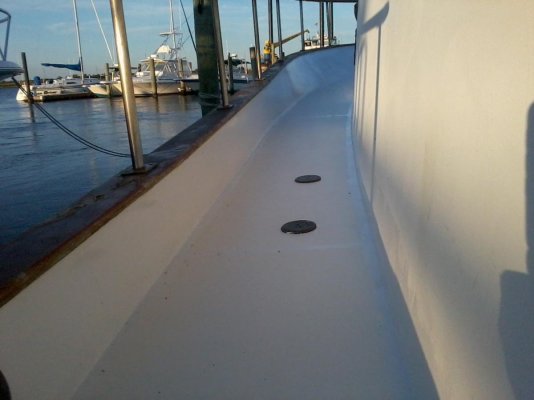In another thread about Island Gypsy, I spotted this:
Provided everything under the teak is sound, how big and expensive a job would that be?
The owner did a superb job of replacing the boat's failing teak decking with fiberglass.
Provided everything under the teak is sound, how big and expensive a job would that be?
Last edited:

